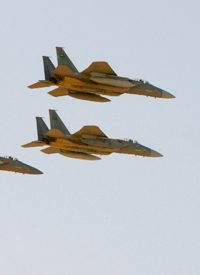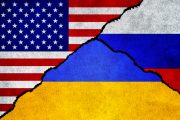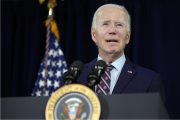
“This sale will send a strong message to countries in the region that the United States is committed to stability in the Gulf and broader Middle East,” Andrew Shapiro, assistant Secretary of State for political-military affairs, told reporters. But the history of arms sales in the region has shown that the allies we arm one year may turn out be our enemies the next.
In the years preceding the Islamic revolution in Tehran, the United States sold tens of billions of dollars worth of military hardware and technology to the Shah of Iran. When the revolution ushered in the reign of Ayatollah Khomeini, America was confronted with a new enemy in the Middle East, one armed with American high-tech weapons. Iranians, still furious at the United States over the 1953 CIA-backed coup that toppled a democratically elected government in Tehran and put the Shah back on the “peacock throne,” stormed the U.S. embassy In November 1979 and held 52 American hostages in a 15-month crisis that spelled the end of the presidency of Jimmy Carter.
The hostage crisis resulted in the breaking of diplomatic relations and trade and the imposition of economic sanctions against Iran. But in an effort to free American hostages held by Middle East terrorists friendly to the Tehran regime, President Reagan secretly authorized sales of weapons to Iran in exchange for Iranian efforts to free the captive Americans. Proceeds from the sale were used to arm and supply the Contras fighting the communist Sandanista government in Nicaragua. Ironically, Israel, which today views Iran as an “existential threat,” was the middle man in the sale of arms to the Iranians in what became known in the United States as the Iran-Contra or “arms for hostages” scandal.
In 1980, while Americans were still being held hostage in Tehran, the eight-year-long Iraq-Iran war began, leading to a boost in the sale of American arms to Iraq. The arming of Saddam Hussein's dictatorship continued through the 1980s, but came to a halt in 1990, when Iraq's invasion of Kuwait gave the United States and our allies a new enemy in the region. The first Gulf War was fought not only to liberate Kuwait, but to create “a new world order” under the auspices of the United Nations, President George H. W. Bush promised.
The next war with Iraq, launched under the second President Bush, was undertaken ostensibly to eliminate Saddam Hussein's “weapons of mass destruction,” despite the fact that the United States and our allies in the West had been the major suppliers of Baghdad's arsenal. When Saddam's regime was toppled and no WMD were found, we still had no shortage of enemies to confront. Our armed forces were still at war with Iraqi insurgents and with hostile forces in Afghanistan as well. And Iran and North Korea were still standing as two-thirds of President Bush's “axis of evil.”
The United States had armed Afghan rebels during the dozen years of Soviet occupation of Afghanistan. But when America went into Afghanistan to battle al-Qaeda and Taliban forces after the September 11 attacks, arms made in America were turned against our own soldiers. Ten years later our armed forces are still in Afghanistan, fighting for what our diplomats like to call “stability” in the Middle East.
Saudi Arabia is officially regarded by the United States as a strategic partner in the Middle East and in the global war on terror, despite a long history of Saudi sponsorship of terrorist organizations and activities.
When the Obama administration first notified Congress of the pending arms sale to the Saudis last year, it had to deal with concerns about security implications for Israel, whose own arsenal is well-stocked with American weapons. “U.S. officials have sought to allay those concerns, and said Thursday that the sale would not degrade Israel’s military advantage,” the Post reported.
Thursday's announcement came on the heels of Iran's threat to block the strategically vital Strait of Hormuz if the West imposes an oil embargo. That led in turn to a warning from the U.S. Navy's Fifth Fleet, based in nearby Bahrain, against any interference with ships navigating the strait. The United States has imposed economic sanctions against Iran for years and has threatened possible military action against the country over concerns that Iran may be covertly developing a nuclear bomb. Iran has insisted its nuclear program is for the peaceful production of nuclear energy.
The Middle East, potentially the most explosive of the world's many hot spots, has more than a few nations heavily armed with American weaponry. When Armageddon comes, it may arrive with a “Made in the USA” label.
Photo of F-15 jets: AP Images


